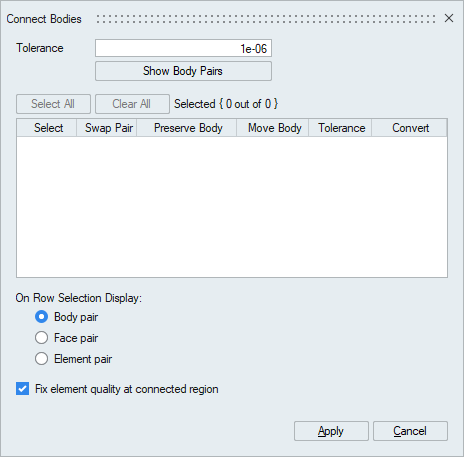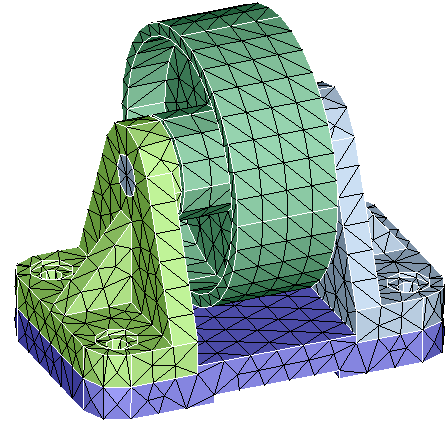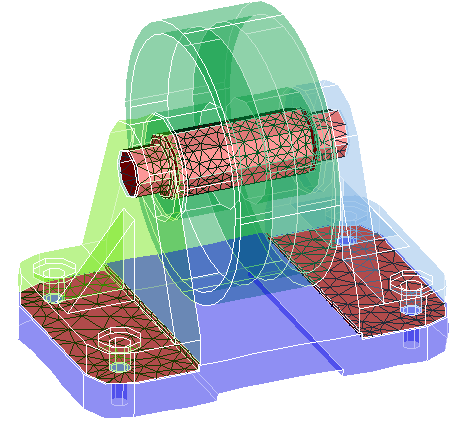Connect Bodies
![]()
Dialog Box

Creating matching mesh between bodies (connecting bodies) that are touching, especially when large numbers of FE bodies are present in an assembly is difficult. This tool provides an efficient way to connect the bodies that are touching each other. We will define touching as bodies with overlapping surfaces, bodies that penetrate each other, and bodies that can have a small gap between them.
One can find all the body pairs that are touching within a tolerance. Once identified, they can be connected. To use this function, first select the bodies. Then select Show Body Pairs and this will display the bodies, as pairs, that are touching within tolerance. From the list of body pairs, one or more can be selected and the bodies connected by selecting Apply. For each body pair if there is a gap or intersection, one body can be set to Preserve Body (will not move) while the other will moved. This is enabled by checking the Swap Pair toggle in each row. The tolerance for each row can also be specified prior to invoking the function.
Prior to connecting the bodies, it might be useful to inspect how the body pairs touch each other. To display the touching bodies, choose the display option to Body pair, to display the touching faces choose Face pair and to display the touching elements choose Element pair.
Body pairs having overlapping surfaces or gap between them can be converted to penetration as an intermediate step to visualise the connecting portion. In the Convert column, To Penetrate option is available for those body pairs. One can use this option to check the connection and manual edit the node movement to have proper connections between the body pair.
It is possible that the mesh where the bodies are connected can be of poor quality. By enabling Fix element quality at connected region the quality of the mesh is improved. Since this can take some time, this is exposed as an option.
Example
- Input Assembly

- Output (shared faces highlighted after connection)

This tool is mainly used in CFD modelling, to connect the exterior parts. An advantage of this approach is that the mesh is modified close to where the bodies touch each other. In the rest of the body the mesh is not modified.
The identified body pairs are retained in the Output List, when the dialog gets closed. On opening the dialog again, it will bring back the body pairs. This helps to quickly get the body pairs and perform other intermediate operations without losing the body pairs.